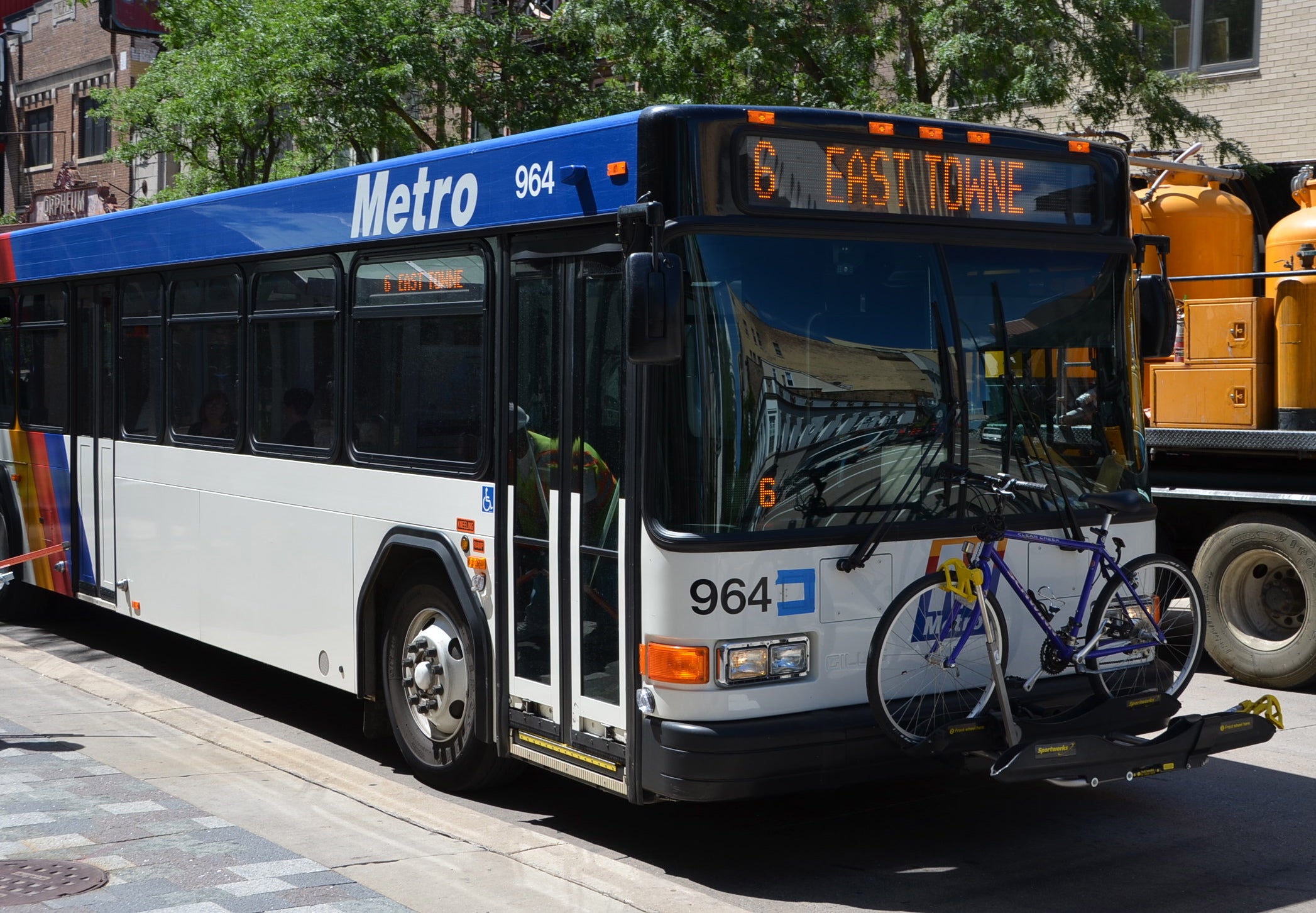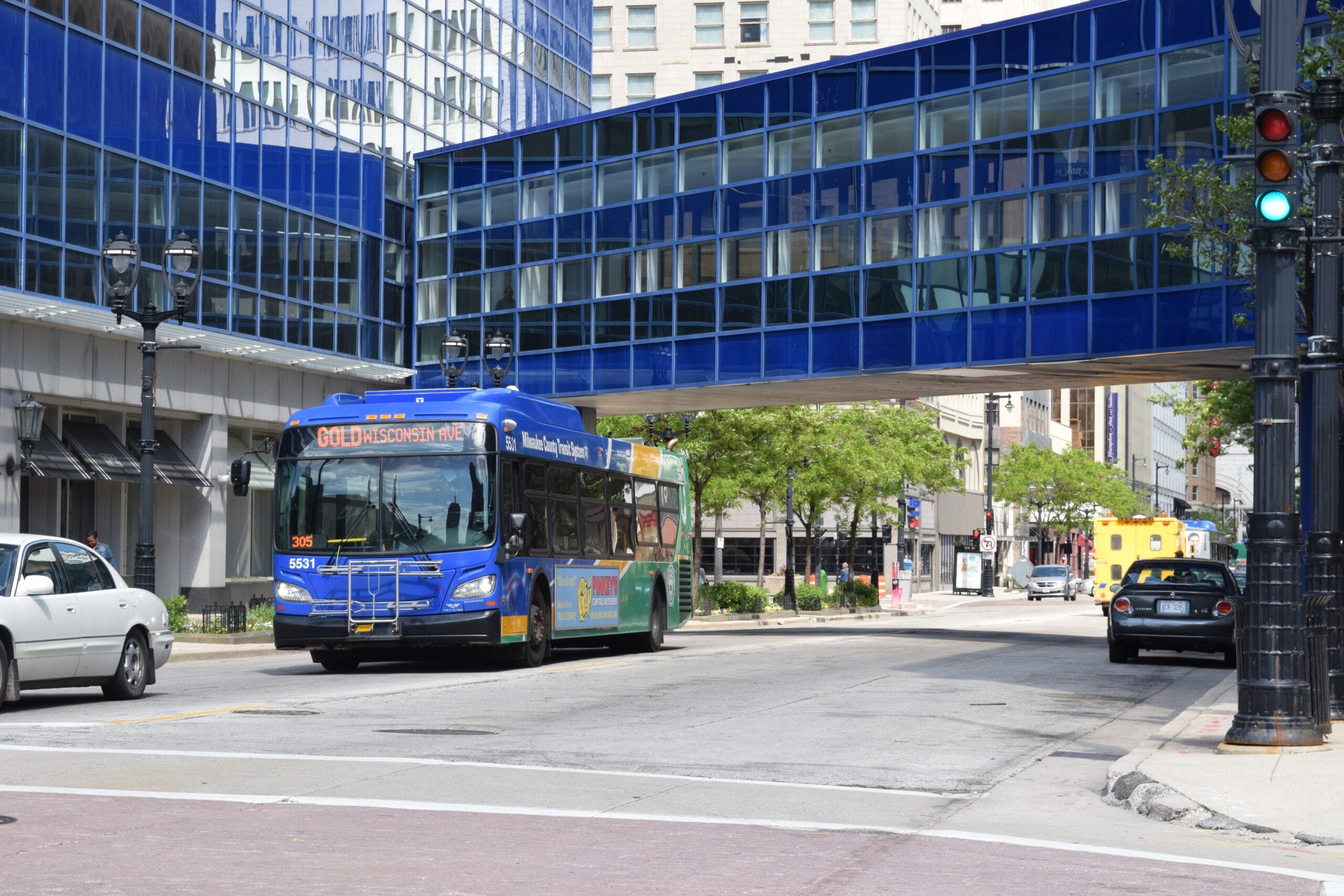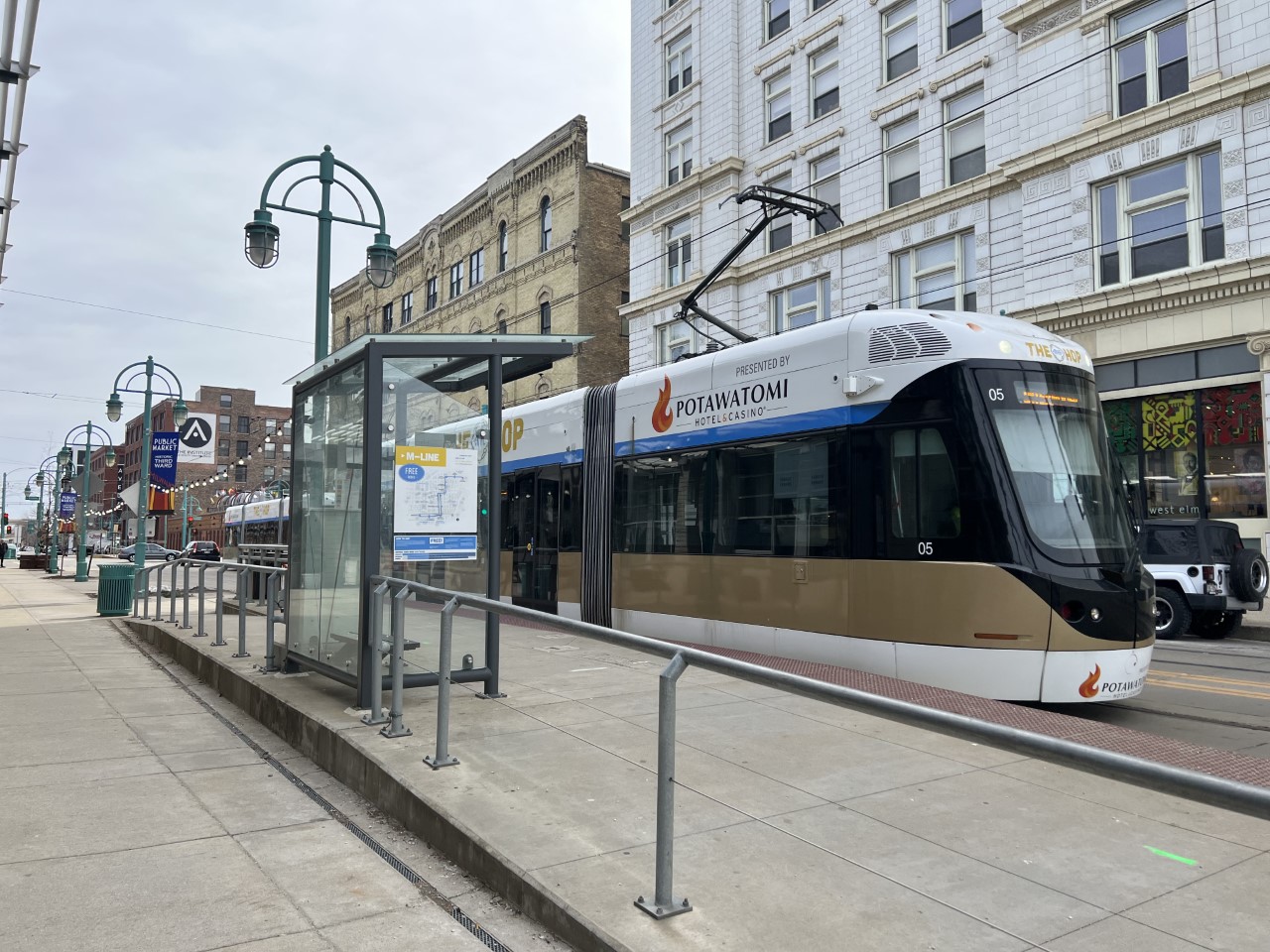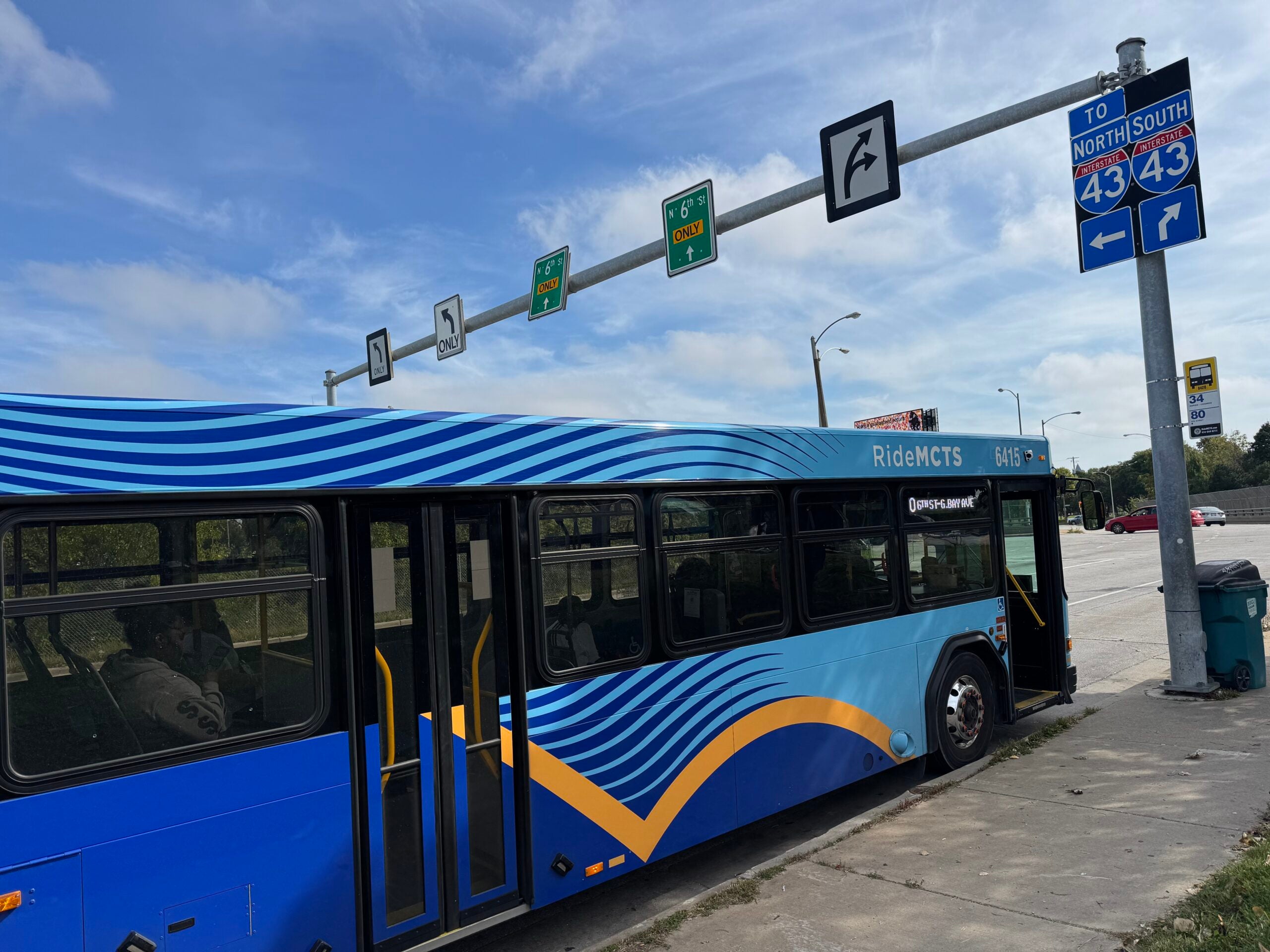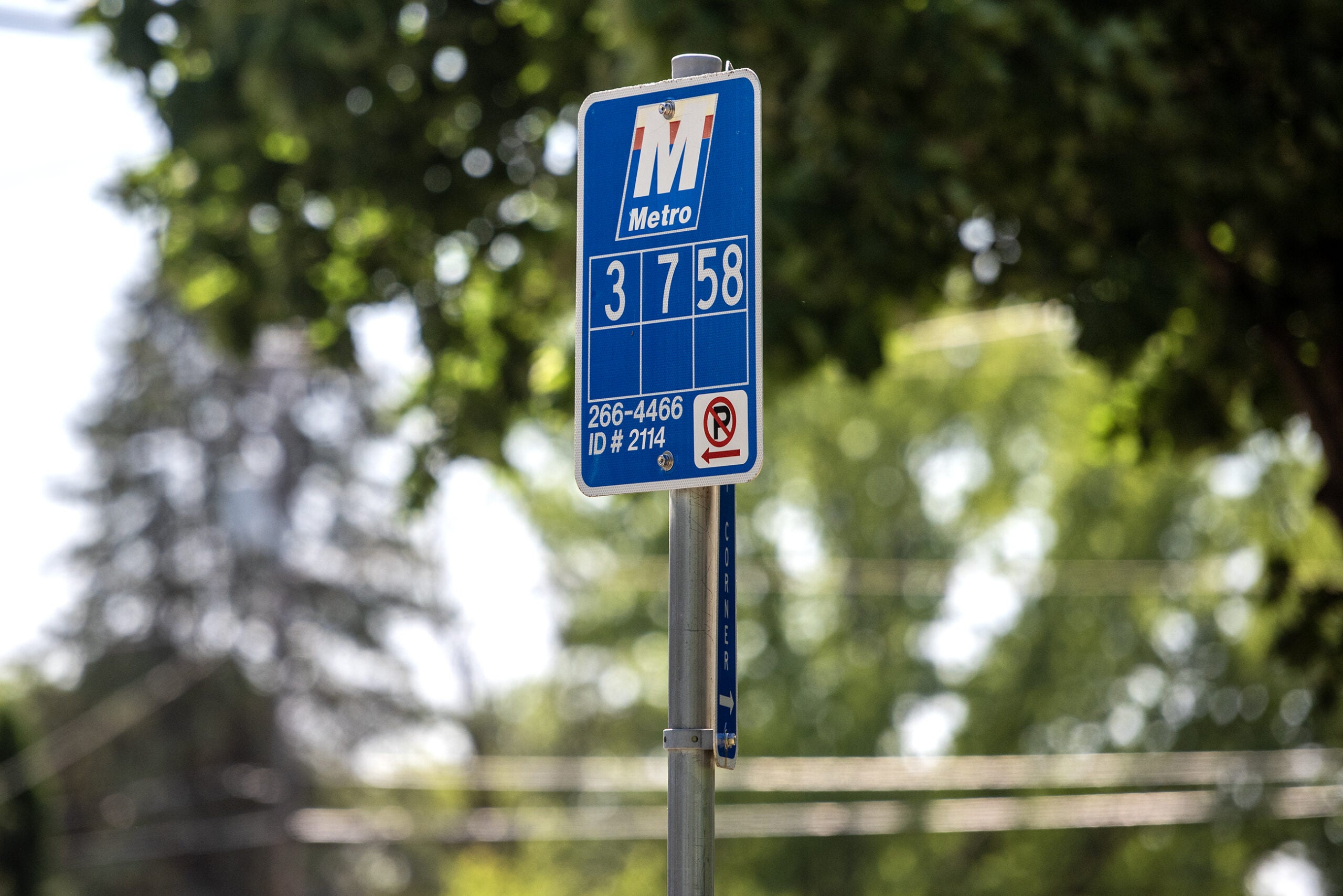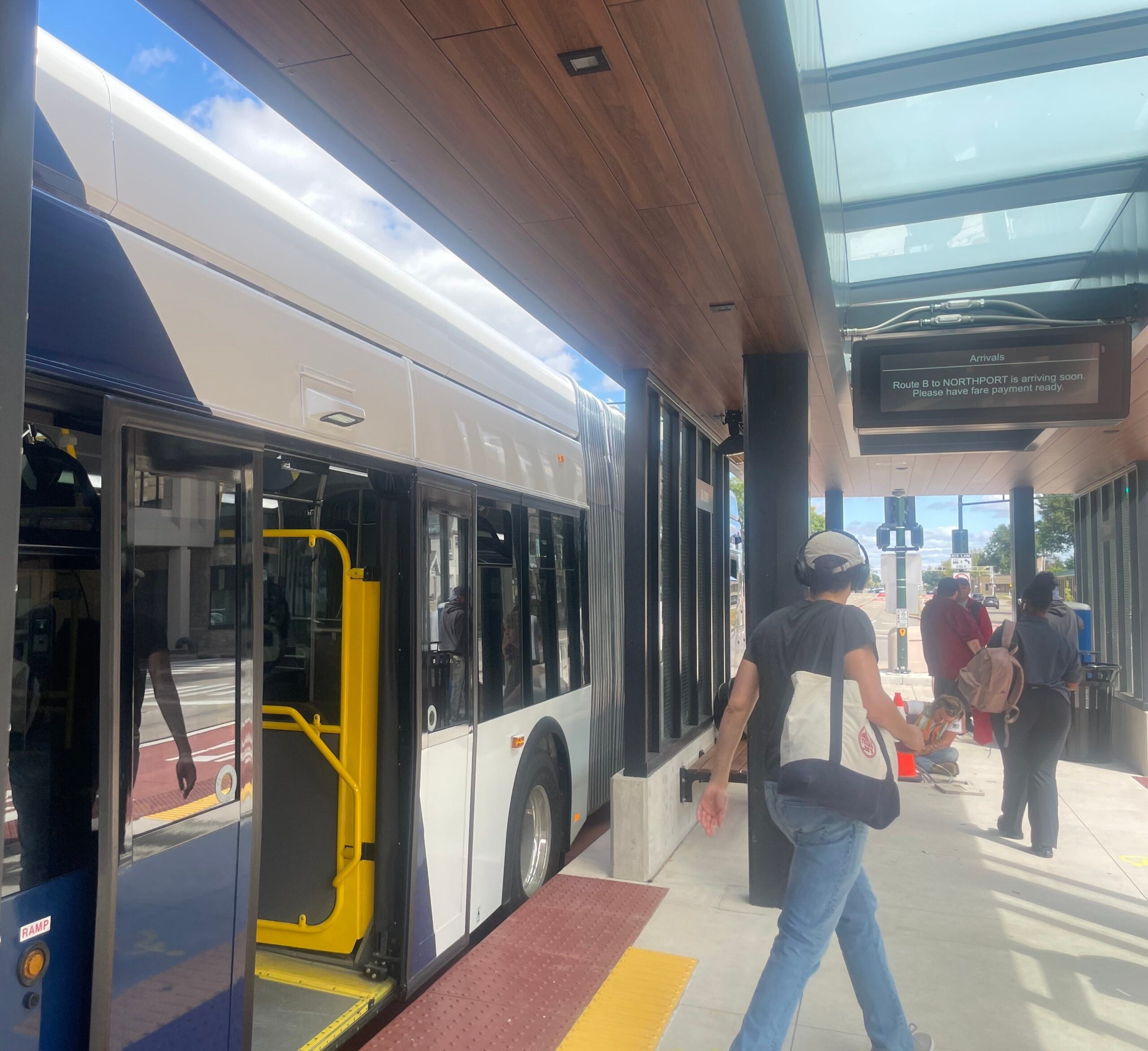Some cities in Wisconsin, like Madison, saw an increase in public transit riders in 2014. But that wasn’t true for the whole state.
Preliminary estimates show Madison Metro had more than 15 million rides in 2014, a jump of more than 3 percent from the previous year. Madison Metro’s spokesman Mick Rusch said Madison is a “wired” city and bus-related smartphone apps are popular.
“That’s one of the things, (we) just have this high use of phone apps,” he said. “Another thing is we are under the impression that millennials as a generation are also riding the bus a lot more.”
News with a little more humanity
WPR’s “Wisconsin Today” newsletter keeps you connected to the state you love without feeling overwhelmed. No paywall. No agenda. No corporate filter.
That impression, Rusch said, was also noted in a 2014 U.S. Public Interest Research Group study, “Millennials In Motion.“
One of the biggest complaints coming from Madison Metro users is that its buses are too full. Rusch said it’s a good problem to have.
“We are very excited that we have that much ridership and it just, it sets the stage for the challenges we have to face and get to moving into the future,” he said, adding that some considerations for the future include more housing for buses and the possibility of a bus rapid transit system.
Not all transit systems in Wisconsin saw an increase, though. Preliminary ride numbers in Wausau showed a decline of more than 2 percent in 2014 from the previous year to 654,088, according to Wausau’s Metro Ride Director Greg Seubert.
In Eau Claire, the preliminary estimate is 1,022,335 riders; that too, is about a 2 percent decline from the previous year.
However, Eau Claire Transit’s Transit Manager Tom Wagener said the decline isn’t surprising. He said in 2011, ridership reached almost 1.1 million, and has fluctuated around that level since then.
“I would say with our service, what we’re able to provide with services, kind of hit a plateau, maybe, so to speak,” he said.
Wagener added that what Eau Claire would like to do next is work on a transfer center, something which has been a challenge with funding on the decline. However, they’re also pursuing a more tech-savvy option. Wagener said they’re trying to make bus routes more user-friendly by having more apps available. A bus tracking app was instituted in the fall of 2014.
“We are looking at hopefully seeing an increase in ridership through that, getting that information out a little bit more easily to our riders. And (we) just want to work with the state Legislature in getting funds available to help improve service,” he said.
At the national level, bus ridership saw a less than 1 percent decline during the third quarter of the year, according to the American Public Transportation Association.
Wisconsin Public Radio, © Copyright 2026, Board of Regents of the University of Wisconsin System and Wisconsin Educational Communications Board.

